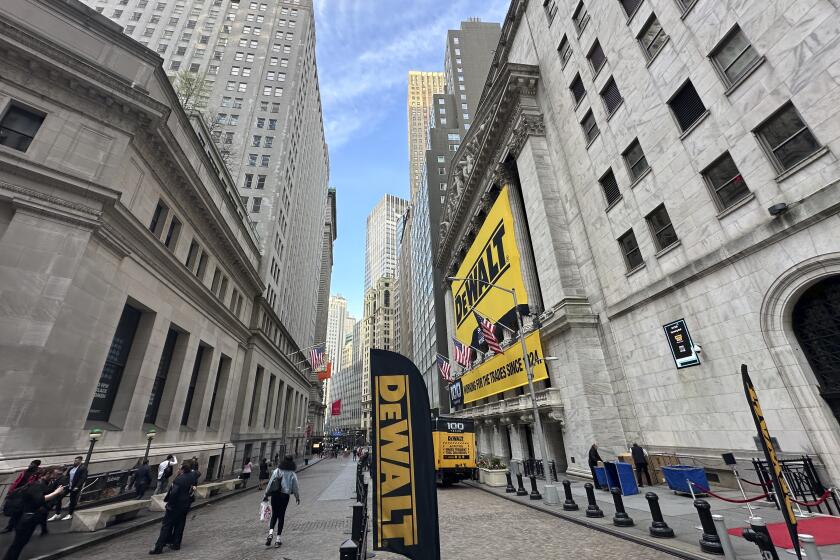Factory Orders Climb 0.5% in January
Orders placed with U.S. factories unexpectedly rose in January even as heavy snow slowed production, according to a government report released Tuesday, a sign of economic strength that may delay further rate cuts by the Federal Reserve Board.
January’s 0.5% increase was the fourth in the last six months. Demand was strong for industrial equipment such as engines, turbines and fabricated metals, the Commerce Department report says. Orders for food and paper products also increased.
“The argument for recession has been beaten back,” said economist Steve Ricchiuto at Barclays de Zoete Wedd Securities in New York. “It’s not dead, but people have scaled back their expectations for Fed easing.”
Reinforcing that idea, Fed Chairman Alan Greenspan said Tuesday at a banking conference in Las Vegas that business investment in computers and technology is generating more economic growth than government statistics show. “We may be underestimating the growth,” Greenspan said.
“Our nation faces many important and difficult challenges in economic policy,” Greenspan said. “Nonetheless, we have made significant and fundamental gains in macroeconomic performance in recent years that enhance the prospects for maximum sustainable economic growth.”
Maximum sustainable growth is the fastest the economy can grow without increasing inflation. Many economists now put that rate at about 2.25%.
In financial markets, the 30-year Treasury bond price fell as investors questioned whether the economy is weak enough for another rate cut. The yield of the benchmark bond rose to 6.38% from 6.33%. However, stocks were higher, with the Dow Jones industrial average rising 42.27 points to 5,642.42. The dollar, meanwhile, was lower against other major currencies.
The Federal Open Market Committee meets March 26, and the strong factory report “adds caution to the notion than an easing takes place immediately,” said Anthony Chan, chief economist at Banc One Investment Advisors Corp. in Columbus, Ohio.
Since last summer, Fed policymakers lowered their target for the benchmark overnight bank-lending rate to 5.25% from 6% in three quarter-point steps.
Still, Chan said the Fed could lower the overnight rate by another quarter-point if the economy stumbles. Inflation, after all, remains at bay. A Labor Department report released Tuesday, for example, shows import prices rose only 0.3% in January, with most of the increase stemming from a seasonal jump in energy costs.
Jerry Jasinowski, president of the National Assn. of Manufacturers, said he is concerned about an increase in factory stockpiles of unsold goods during January. That could “point to a weak first quarter,” Jasinowski said.
Tuesday’s factory report was delayed by the three-week partial shutdown of government agencies in December and January. Because of the shutdown, Tuesday’s report also includes the first reading on January durable-goods orders.
Orders for durable goods--goods made to last three or more years--advanced 0.2% in January after increasing 3.1% in December.
While demand for industrial products accounted for most of the gain, orders for transportation equipment fell for the first time since October. Orders for nondurable goods, such as food and clothing, increased 0.8% in January after rising 0.2% during the previous month.
(BEGIN TEXT OF INFOBOX / INFOGRAPHIC)
Factory Orders
Seasonally adjusted new orders, in billions of dollars:
Jan. 1996: $311.1
Source Commerce Department
Durable Goods
Seasonally adjusted new orders, in billions of dollars:
Jan. 1996: $170.6
Source: Commerce Department






